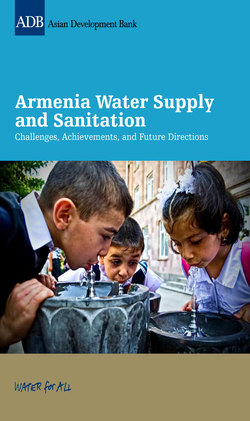Читать книгу Armenia Water Supply and Sanitation - In-Ho Keum - Страница 7
На сайте Литреса книга снята с продажи.
INTRODUCTION
ОглавлениеArmenia is a mountainous country in the South Caucasus area, bordering Azerbaijan, Georgia, Iran, and Turkey. It has a population of around 3 million, with about 64% living in urban areas and the remaining in rural regions of the country.
With 10.2 billion cubic meters (m3) of water per year on average, of which 2.4 billion m3 is used for drinking purposes, the country indeed has abundant water resources. About 96% of drinking water is groundwater drawn through boreholes, wells, and springs. Most raw water is of good quality and requires only disinfection. The typical drinking water infrastructure includes water intakes, transmission mains, pumping stations, and distribution networks.
Eduard Chil-Akopyan/Lernik Asatryan
Typical wastewater infrastructure includes house connections, sewer networks, pumping stations, and wastewater treatment plants. However, since Armenia’s independence in 1991, the deterioration of water supply and sanitation (WSS) infrastructure and service delivery mechanisms has impacted the quality of water, making it a crucial issue on the development agenda. For almost all Armenians, low-pressure water, which sometimes failed to comply with biological water quality standards, was available for only a few hours a day.
Armenia became a member of the Asian Development Bank (ADB) in 2006. Since 2007, ADB has supported reforms and investments in the country’s WSS sector, working with the government and other international financial institutions and bilateral funding agencies.1
The efforts of the government and development partners over the past decade resulted in improved water access, reliability, and quality. The institutional model adopted by Armenia, which combines public investments with private sector operation for the WSS utilities, has led to the country’s achievements.
This report looks at the challenges, achievements, and the future to facilitate WSS sector reforms in other ADB developing member countries facing similar challenges.
Eduard Chil-Akopyan/Lernik Asatryan
